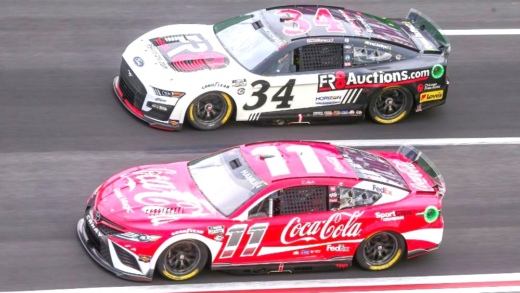This article provides essential information about emergency lane use, including legal regulations, common misconceptions, and safe driving practices. It covers the rules for motorcycles, penalties for misuse, and state-specific laws to ensure drivers are well-informed.
Emergency Lane Basics: What Is It and Why Do We Have It?
Emergency lane rules are crucial for ensuring safety on the roads. An emergency lane, often referred to as a shoulder, is a designated area beside the main lanes of traffic. Its primary purpose is to provide a safe space for emergency vehicles to operate, especially during urgent situations like accidents or breakdowns. This lane allows first responders to reach incidents quickly without navigating through congested traffic.
Understanding the function of the emergency lane helps drivers make informed decisions. It is not a lane for personal use or a shortcut to bypass traffic. Misusing it can lead to dangerous situations, both for the driver and others on the road. Statistically, accidents involving emergency vehicles can increase when drivers disregard these lanes.
Legal Use of the Emergency Lane: When Is It Okay to Drive There?
Driving in the emergency lane laws vary by state, but generally, it is only permissible under specific circumstances. For example, if your vehicle is experiencing mechanical issues, pulling over to the emergency lane is not just advisable; it’s often required by law. Additionally, emergency vehicles responding to a call have the right of way in these lanes, so drivers must yield when they approach.
In some regions, motorcycles in emergency lane usage is allowed, but only under strict regulations. For instance, in California, motorcycles can use the lane to filter through traffic, reducing congestion. However, this practice is not universally accepted, and laws differ significantly across states.
Consequences of Misusing the Emergency Lane: What Are the Penalties?
Misusing the emergency lane can lead to serious consequences, including hefty fines. Penalties for emergency lane misuse vary but can range from $100 to $500, depending on the state and the severity of the violation. Some states even impose points on the driver’s license for such offenses, which can lead to increased insurance rates.
Moreover, if a driver obstructs an emergency vehicle, the penalties can escalate dramatically. In critical situations, this action could impede emergency response efforts, potentially resulting in further legal repercussions. It’s essential for all drivers to respect the emergency vehicle right of way to ensure everyone’s safety on the road.
Traffic Congestion and Emergency Lane Use: What You Need to Know
Emergency lane rules become particularly significant during traffic congestion. When roads are jammed, many drivers might think using the emergency lane is a clever way to bypass gridlock. However, this is not only illegal but also dangerous. Emergency lanes are designed to ensure that first responders can reach incidents quickly, and using them during traffic jams can obstruct these vital services.
In congested areas, it’s crucial to recognize that the emergency lane must remain clear. Failure to comply can lead to penalties and potentially severe consequences for both the driver and those in need of emergency assistance. The law does not permit anyone to use the emergency lane to escape traffic—doing so can result in hefty fines and points on a driving record.
Statistics show that accidents involving emergency vehicles can spike when drivers misuse these lanes. According to the National Highway Traffic Safety Administration, a significant percentage of fatalities occur when emergency responders are impeded by regular traffic. It’s essential to respect emergency lane usage to keep everyone safe.
State-Specific Laws: Are There Differences in Emergency Lane Regulations?
Understanding driving in emergency lane laws varies widely by state. Each state has its own regulations governing the use of emergency lanes, and it’s vital for drivers to familiarize themselves with local laws. For example, some states like California allow motorcycles to use the emergency lane to filter through traffic, while others strictly prohibit this practice.
Additionally, penalties for emergency lane misuse can differ significantly. Here’s a quick overview of how regulations can vary:
- California: Motorcycles can use the emergency lane, but cars cannot.
- Texas: Emergency lanes must remain clear at all times, with fines reaching up to $500 for violations.
- Florida: Allows for emergency lane use during breakdowns but not for bypassing traffic.
Staying informed about these differences can help drivers avoid legal issues and ensure compliance with local laws. Ignorance is not an excuse, and being aware of state-specific regulations can save time and money.
Responding to Emergency Vehicles: What Should You Do?
When encountering an emergency vehicle in the emergency lane, knowing how to respond is critical. The emergency vehicle right of way is paramount for ensuring swift assistance to those in need. Here are steps to follow:
- Slow Down: Reduce speed as you approach the emergency vehicle.
- Move Over: If possible, change lanes to give the emergency vehicle more space.
- Stay Alert: Watch for any additional emergency responders that may arrive.
Failing to yield to emergency vehicles can result in serious consequences, including fines and increased insurance rates. Being aware of your surroundings and respecting emergency lanes can save lives. Remember, it’s not just about following the law—it’s about being a responsible driver.
Motorcycles and the Emergency Lane: Can They Use It?
Emergency lane rules regarding motorcycles can be confusing. In some states, motorcycles are allowed to use the emergency lane during traffic congestion, which can be a lifesaver for bikers. For instance, in California, motorcyclists can legally split lanes, meaning they can ride in the emergency lane to maneuver through slow-moving traffic. However, this practice is not universally accepted across the United States. In many states, riding in the emergency lane is strictly prohibited for motorcycles, leading to potential fines.
It’s crucial for motorcycle riders to understand their local laws. Using the emergency lane without proper knowledge can result in penalties ranging from fines to points on a driver’s license. Riders should always stay alert to the possibility of emergency vehicles needing access to these lanes, as obstructing them can have serious consequences.
Common Misconceptions: What Myths Surround Emergency Lane Use?
There are several emergency lane misconceptions that can lead to dangerous driving behaviors. One common myth is that the emergency lane can be used anytime a driver is in a hurry. This misconception often leads to motorists using the lane during traffic jams, thinking they are being clever. However, using the emergency lane in this manner is illegal and can impede emergency services.
Another myth is that emergency lanes are only for vehicles with flashing lights. In reality, these lanes are designated for emergency vehicles, but they are also meant for drivers experiencing emergencies, such as breakdowns. Failing to pull over properly can lead to misunderstandings and potentially dangerous situations.
Additionally, some drivers believe that motorcycles have unrestricted access to emergency lanes. While this is true in certain states, it’s not a blanket rule. Misunderstanding these regulations can lead to hefty fines and accidents. Educating oneself on the facts surrounding emergency lane usage can prevent costly mistakes.
Expert Tips: Safe Driving Around Emergency Lanes
Driving safely around emergency lanes is essential for all road users. Here are some expert tips to keep in mind:
- Stay Aware: Always be mindful of your surroundings. Watch for emergency vehicles and be prepared to yield.
- Know the Laws: Familiarize yourself with local laws regarding emergency lanes. This knowledge can save you from fines.
- Do Not Use for Convenience: Avoid using the emergency lane to bypass traffic. It’s illegal and can hinder emergency responders.
- Pull Over Safely: If your vehicle breaks down, pull over as far to the right as possible, ideally into the emergency lane, to avoid blocking traffic.
- Educate Others: Share your knowledge about emergency lane rules with friends and family to promote safer driving habits.
By following these tips, drivers can contribute to safer roads and ensure that emergency services can perform their vital roles without obstruction.





Comments are closed.